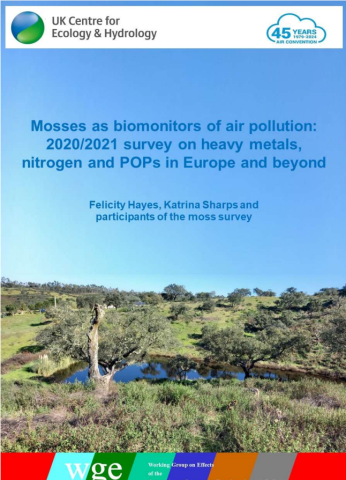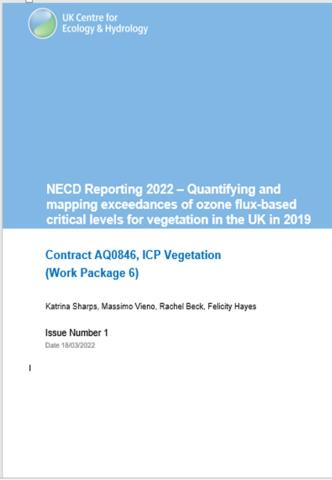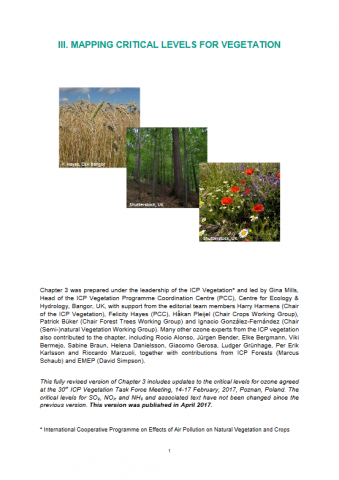| Title | First Europe-wide correlation analysis identifying factors best explaining the total nitrogen concentration in mosses |
| Publication Type | Journal Article |
| Year of Publication | 2010 |
| Authors | Schroder W., Holy M., Pesch R., Harmens H., Fagerli H., Alber R., Coskun M., De Temmerman L., Frolova M., Gonzalez-Miqueo L., Jeran Z., Kubin E., Leblond S., Liiv S., Mankovska B., Piispanen J., Santamaria J.M, Simoneie P., Suchara I., Yurukova L., Thoni L., Zechmeister H.G |
| Journal | Atmospheric Environment |
| Volume | 44 |
| Pagination | 3485-3491 |
| Date Published | Sep |
| ISBN Number | 1352-2310 |
| Accession Number | WOS:000281292700003 |
| Keywords | nitrogen |
| Abstract | In this study, the indicative value of mosses as biomonitors of atmospheric nitrogen (N) depositions and air concentrations on the one hand and site-specific and regional factors which explain best the total N concentration in mosses on the other hand were investigated for the first time at a European scale using correlation analyses. The analyses included data from mosses collected from 2781 sites across Europe within the framework of the European moss survey 2005/6, which was coordinated by the International Cooperative Programme on Effects of Air Pollution on Natural Vegetation and Crops (ICP Vegetation). Modelled atmospheric N deposition and air concentration data were calculated using the Unified EMEP Model of the European Monitoring and Evaluation Programme (EMEP) of the Convention on Long-range Transboundary Air Pollution (CLRTAP). The modelled deposition and concentration data encompass various N compounds. In order to assess the correlations between moss tissue total N concentrations and the chosen predictors. Spearman rank correlation analysis and Classification and Regression Trees (CART) were applied. The Spearman rank correlation analysis showed that the total N concentration in mosses and modelled N depositions and air concentrations are significantly correlated (0.53 <= r(s) <= 0.68, p < 0.001). Correlations with other predictors were lower than 0.55. The CART analysis indicated that the variation in the total N concentration in mosses was best explained by the variation in NH(4)(+) concentrations in air, followed by NO(2) concentrations in air, sampled moss species and total dry N deposition. The total N concentrations in mosses mirror land use-related atmospheric concentrations and depositions of N across Europe. In addition to already proven associations to measured N deposition on a local scale the study at hand gives a scientific prove on the association of N concentration in mosses and modelled deposition at the European scale. (C) 2010 Elsevier Ltd. All rights reserved. |
| Short Title | Atmos EnvironAtmos Environ |
| Alternate Journal | Atmos Environ |


